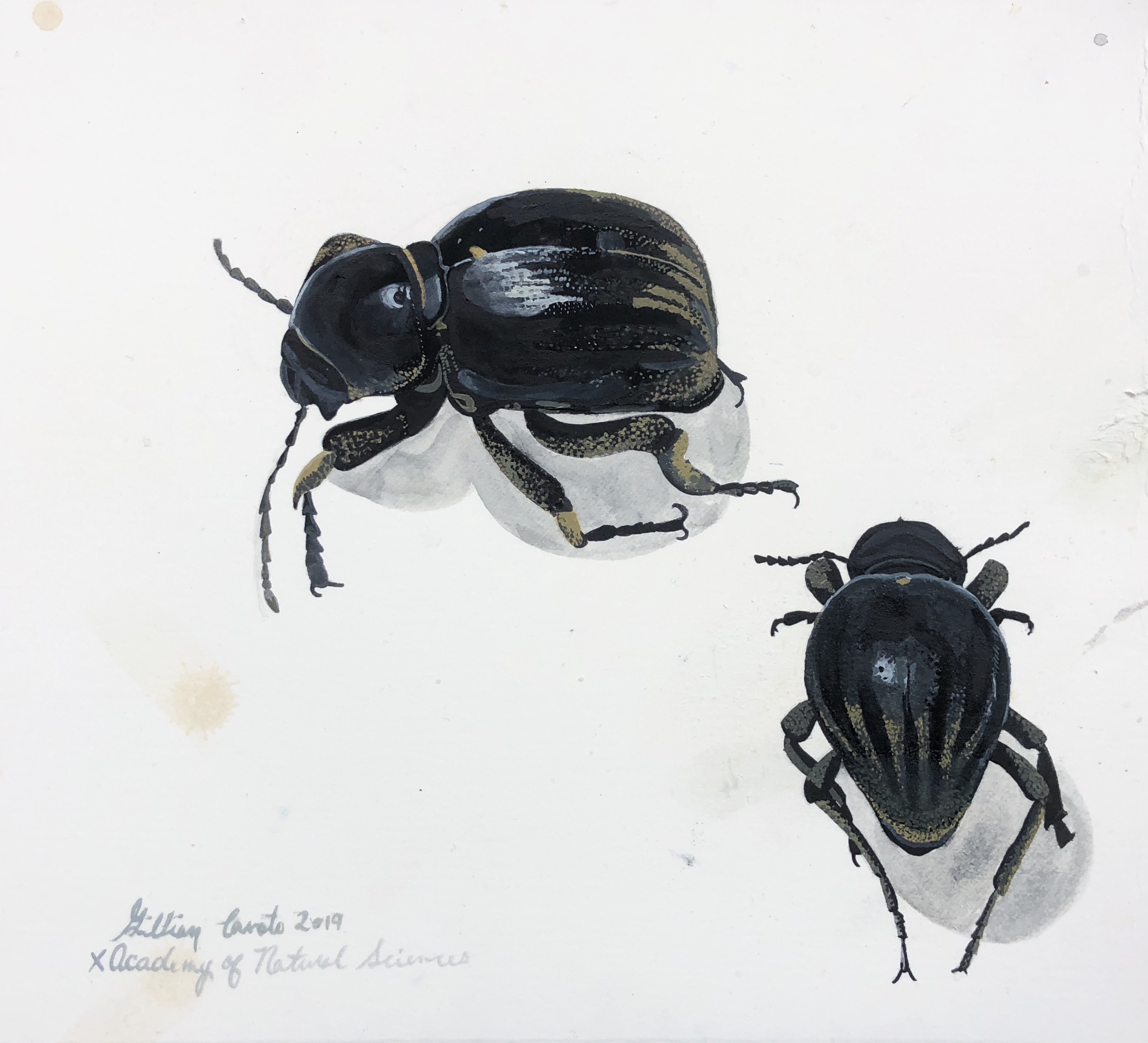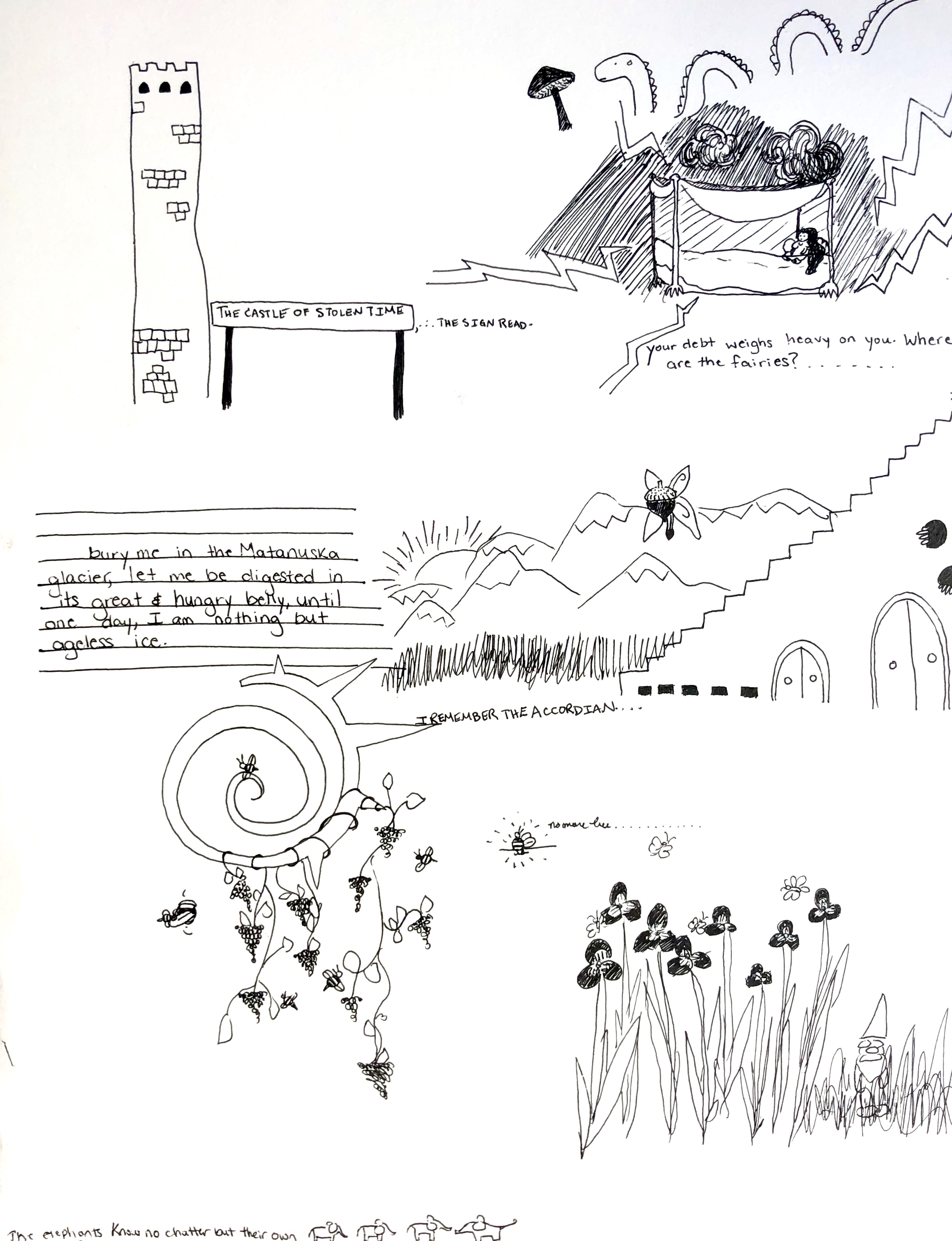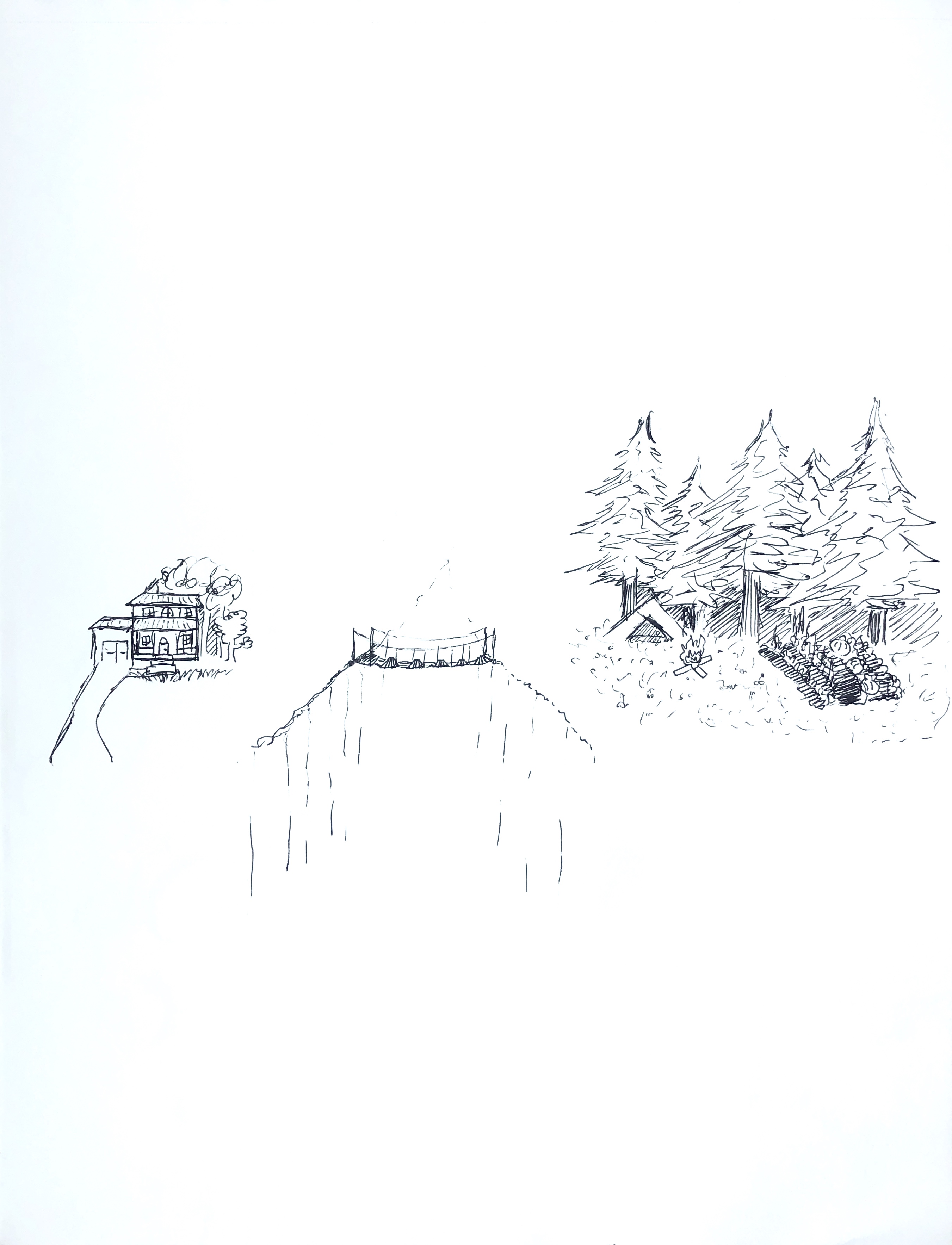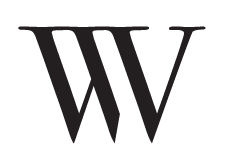Growing up with a childhood spent tumbling through streams, trees, and horse stables, artist Gillian Cavoto has dedicated her craft to seeing the beauty in nature. Attending the Pennsylvania Academy of the Fine Arts, Cavoto quickly fell in love with watercolor. She began creating highly detailed paintings of seashells and insects she collected on her adventures. Lately her artistic pursuits have taken on a more intuitive approach. Rather than focusing on the reality of the world around us, Gillian has been turning inward, to the reality of her subconscious. Using the new acquired technique of combing ink and graphite on paper she weaves stories that encapsulate both nature with highly surrealist elements.
We caught up with Cavoto recently about life, art and the current economic situation…
MD: Was there a pivotal moment when you decided to follow your path as an artist?
GC:: Thinking about it, I can recall two moments in very different parts of my life. The first being when I was five years old. I’ve always loved to create art, and the top careers on my list as a kindergartner were dolphin trainer, artist, and zoo keeper. I remember walking outside to get in the car, looking at the clouds and thinking, “When I grow up I want to be an artist.” But as a little kid whose mom was a preschool teacher and whose dad was a chiropractor, I didn’t really think it was even a possibility. Flash forward thirteen years and I’m in an art class in my senior year of high school creating more pieces faster than I had ever before, looking at colleges, not really sure what I want to do. Initially I was looking into schools for biology as I’ve always loved animals and being outdoors and that seemed as good a place as any to start in that field. But my art teacher, Claudia Eckel, a wonderfully talented artist, really inspired me. She taught me art wasn’t something you had to love on the side of your “real job”, it can be your real job if you’re willing to work hard enough. It was Miss Eckel and her art class that finally convinced me. And for that, I’ll always be grateful.
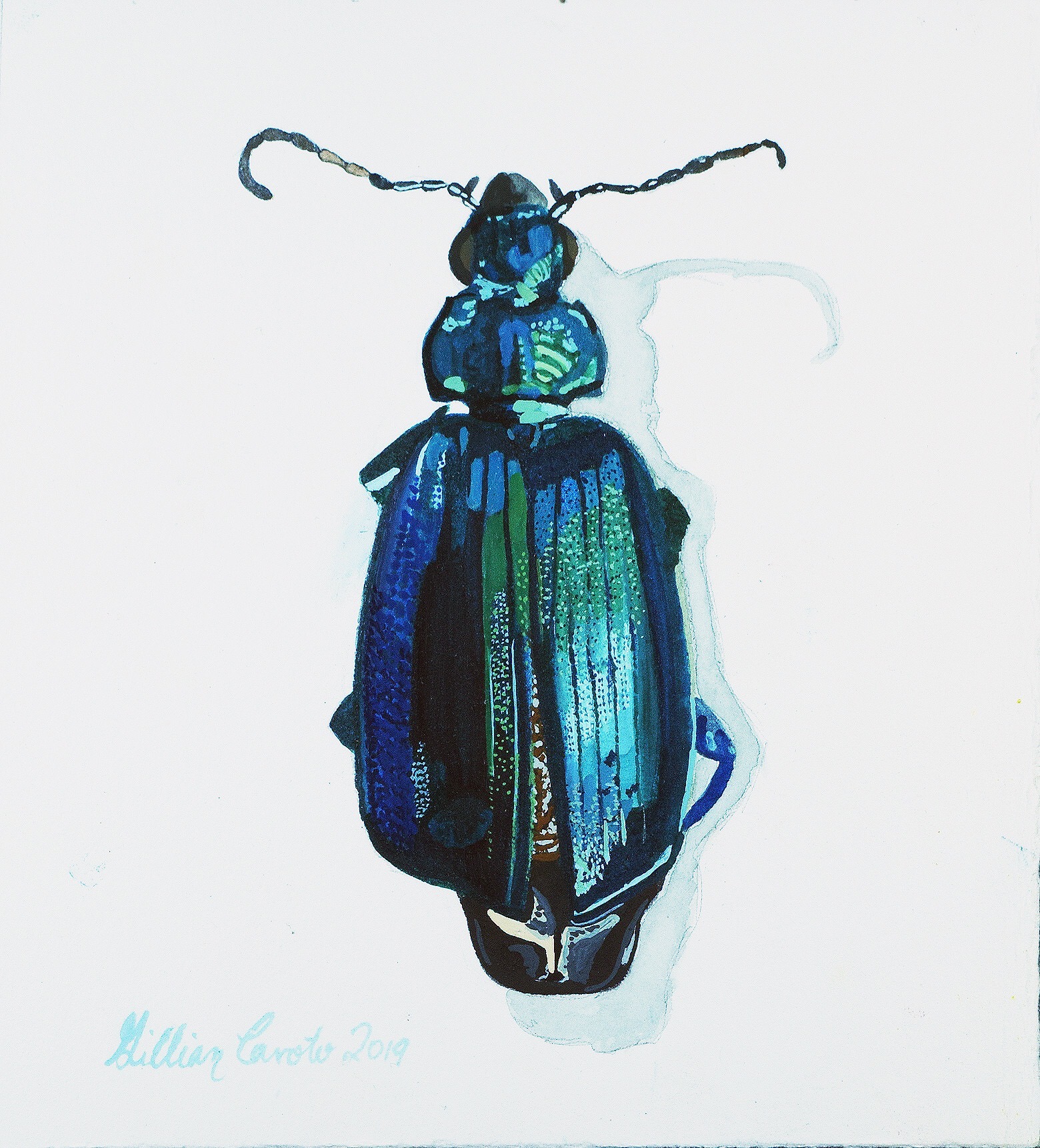
Much of your work focuses on animals and nature, how did this become your main source of inspiration?
Honestly it was very natural for me to paint these things. I was lucky as a kid to have remarkably beautiful outdoor spaces to run around in. I grew up in the Brandywine Valley in Pennsylvania. We had woods and a creek in our backyard. We had two horses boarded at a barn in the heart of the valley. I spent most of my time playing outside, riding horses, running around creeks and woods. I have always been fascinated with the plants and animals that color our planet. Every night before bed my siblings, my mom, and I would all watch Animal Planet together. Shows like Crocodile Hunter and River Monsters. My mom is a big animal and nature lover too, so we always had like a million pets around. So I guess it’s really no surprise that I gravitate towards these things, as that’s what I’ve always known.
What are your primary mediums, and what is the process of creating a piece of art for you?
I primarily work in watercolor, graphite, and ink. My process is fairly straightforward for the illustrations of animals and plants. I find one that interests and inspires me, next I try to find one I can see in person. I was extremely fortunate to have gotten a position as a visiting artist at The Academy of Natural Sciences of Drexel University in the entomology department, so specimens were easy to come by. If not at that museum, I’d go to others or the zoo, aquarium, botanical gardens, my garden, etc., to try and see or find a subject. Once I’ve accomplished that I sketch the subject from many different points of view and take copious photographs. If seeing the real thing isn’t an option, I find the best references I can and work with those.
For my intuitive work the process is completely different. I’ll get cozied up in my studio or at a coffee shop, turn on some slow music that relaxes me and helps me tap into my emotional and intuitive side. I follow where my mind and hand takes me. I’d like to work very large when I have the resources.
“My process is fairly straightforward for the illustrations of animals and plants. I find one that interests and inspires me, next I try to find one I can see in person.”
How have you been coping with the Covid lockdown as an artist, please tell about your experience?
When Covid initially started affecting the area I lived in, it became very hard to focus. At the time I had been working three jobs and I lost them all due to all of the closures. So I had more time than ever to make work, but I couldn’t seem to focus. After about a couple of weeks I started a vegetable garden as a way to get myself out and productive. I dug up the plot myself and tended to the seeds. However, I was still struggling to make. I coped with all the changes by spending a lot of time outside. I gardened, I mountain biked, I hiked with my moms dog. Not a lot of creating was happening but a lot of personal growth took place and I think that made all that time worthwhile. My fiance told me the song “Oom Sha La La” by Hayley Heynderickx describes me perfectly and I can’t help but laugh at that when I think about it because it’s true. At the end of this passed May I moved to Georgia to be with him and the fresh environment has proved very helpful to get back in the workflow.

What advice would you give to a young artist following in your steps?
Whatever you’re doing now that you think you’ve figured out that it’s your forever practice, you’re probably wrong. But that’s exciting because think of all the possibilities! And the most important person you need on your side is yourself. You need to have a fire burning in your spirit for yourself and your goals before you can expect anyone else to light one for you. Grow that fire, accept constructive criticism, put yourself out there and meet people, and eventually your flame will catch and spread. ALSO: Boundaries! And sleep! Eating well and exercising! Set time away from your studio for you and for taking care of your mind and body. Your art will thank you.
What role does the artist have in society?
Oh boy. That’s a question with many answers. To me, artists are communicators. We communicate ideas and often we communicate beauty. Artists have always been at the forefront of change. Great art sticks with you and it makes you think, perhaps expanding your worldview. Artists are observers in ways that other people are not, and it matters that we make our observations known, because they can offer a valuable alternative point of view or fresh ideas.

Has your work evolved over the years, and if so, how?
My art practice has changed significantly. I am not making many watercolor studies, instead my focus has moved to more intuitive and subconscious subject matter. The work is technically simpler, however the subject matter is far more complex. It’s an exploration of my inner self and my relationship to reality, and my inner world. This work explores my past, my inner self, and what I hope for my future.
Describe a real life situation that inspired you.
When I was seventeen I took a three week long backpacking trip in Alaska. I had always loved the outdoors, but that experience took everything to a whole new level. I was now obsessed with wild spaces and continue to be to this day. The absolute silence of the tundra except for the wind, the occasional bird, and the crunch of your footsteps, is something that I crave even now. Peace like I had never known before.

What’s the best piece of advice you’ve ever been given?
The best piece of advice I’ve been given? A very close friend told me, “It doesn’t always have to be hard.” And she was referring to art making. My watercolor practice is painstaking and I love it, but it is difficult. Sometimes the spirit moves you and it doesn’t have to be painstaking. That was big for me. This new vein of work comes to my hand in a more free form way and I don’t sweat over every detail. The second and equally valuable piece of advice came from a teacher at Pennsylvania Academy of the Fine Arts, Dan Miller. He was one of the critics assigned to come to my studio and critique my work. At the time I really thought I needed to be a successful oil painter, and I had a piece I wanted him to look at and the watercolor sketch of that piece. He looked at the oil painting for about three seconds, looked at me, and said, “You should not oil paint anymore, you aren’t very good, but your watercolors, there’s a lot of potential there. You should do more of those.” And that was pretty much the entire critique and it was one of the best I ever got. It was as if I needed permission to let go of oil painting and pursue the thing I was really beginning to enjoy. I’ve never looked back.
What else should our readers know about you?
I actually have my own small collection of insect specimens and even attempted to raise my own silk moths. It was a failure, but a very fun one. I only got one cocoon out of the whole lot and no moths. I’m pretty sure they got too cold. Before I was interested in insects I was very very interested in seashells and fish. I actually initially wanted a position in the ichthyology department of The Academy of Natural Sciences of Drexel University, but there were none available. I have a very large collection of seashells. Some I’ve found, and some I’ve bought. Marine biology was the other subject I seriously considered going to school for. I’ve always been fascinated with marine ecosystems. I think it worked out how it was supposed to though.
